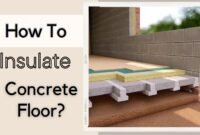Cellulose insulation, popular among homeowners, is a type of loose-fill insulation made from recycled paper products like old newspapers and cardboard. Available in wet and dry forms, it is often praised for its environmental benefits.
However, despite its advantages, there are several disadvantages of cellulose insulation that homeowners should be aware of.
Problems with Cellulose Insulation
Settling Over Time
Modern cellulose insulation, treated with fire retardant chemicals like boric acid, can settle up to 20%. This process, known as bridging, occurs when the cellulose in wall cavities separates over time, creating gaps.
These gaps allow air to flow in and out of the house, increasing energy bills as heating and cooling systems work harder to maintain a consistent temperature. Pests can also create nests in homes with loose-fill cellulose, leading to significant gaps in insulation coverage.
Dust Spread
Cellulose insulation can spread dust throughout the house, especially in homes with furnace duct systems. Gaps in wall cavities, such as around electrical outlets, can allow densely packed cellulose insulation to leak, circulating dust and causing air quality issues.

Expertise and Building Codes
Finding installers experienced with cellulose insulation can be challenging in some areas. Expert installers know how to dense-pack loose-fill dry cellulose, apply stabilized (partially wet) cellulose on sloped surfaces, and determine drying times for wet-spray cellulose. Building codes in the U.S. may not be updated for cellulose insulation, requiring homeowners to confirm approval with local authorities.
Solution: Both the installer and manufacturer should handle building code confirmations to save homeowners time and effort.
Read also: Here’s How to Keep a Poorly Insulated House Warm
Heavier than Other Insulation
Loose cellulose weighs nearly three times as much per square foot as loose fiberglass for the same R-value. Before choosing cellulose insulation for ceilings in existing structures, it’s essential to evaluate the structure for signs of fragility.
Table: Comparison of Insulation Weights
| Insulation Type | Weight per Square Foot (lbs) | R-value per Inch |
|---|---|---|
| Loose Cellulose | 3 | 3.2 |
| Loose Fiberglass | 1 | 2.2 |
Potential Dangers
Cellulose insulation, especially if improperly installed, can generate excessive dust. If the cellulose fiber is not adequately treated with fire retardant agents like boric acid, there may be safety concerns. While cellulose insulation can create dust issues, it doesn’t pose the same risks of fine fibers entering the respiratory system as fiberglass insulation does.
Pros and Cons of Cellulose Insulation
Advantages
- Environmental Benefit: Reduces waste by using recycled paper products.
- Thermal Resistance: Higher R-value than ordinary fiberglass (approximately R-3.2 per inch compared to R-2.2 per inch).
- Health Risks: Lower health risks compared to fiberglass.
- Cost-Effectiveness: Often less expensive than fiberglass insulation (up to 25% cheaper in some cases).
Disadvantages
- Dust Generation: Installation generates a lot of dust, requiring an approved breathing mask.
- Moisture Absorption: Readily absorbs moisture, reducing long-term efficiency and potentially causing mold and decay.
- Installation Expertise: Requires skilled installation to avoid moisture absorption issues.
- Weight: Heavier than other insulation types, necessitating structural evaluations.
Energy Efficiency and Moisture Concerns
While cellulose insulation offers good thermal resistance, its tendency to settle over time can reduce its effectiveness. In cases of water damage, cellulose insulation can absorb moisture, decreasing its insulating properties and increasing the risk of mold growth.
Example: An Oregon homeowner experienced significant mold issues after a roof leak, as the cellulose insulation absorbed the moisture. Replacing the insulation was costly and time-consuming.
Conclusion
Cellulose insulation has several benefits, such as being environmentally friendly and cost-effective. However, homeowners should consider its disadvantages, including settling, dust generation, moisture absorption, and the need for fire retardant treatment.
By weighing these factors and considering real-life examples, homeowners can make informed decisions about whether cellulose insulation is suitable for their needs.


